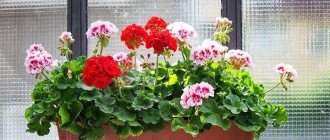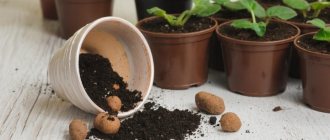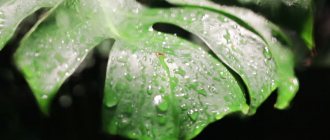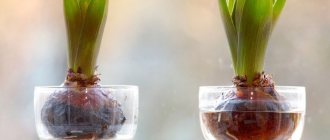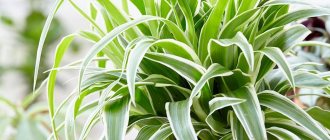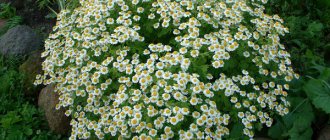Breathing is a chain of chemical reactions that allows all living beings to synthesize the energy necessary to maintain life. What do plants breathe and how do plants breathe? Read about it below.
This is a biochemical process in which air moves between the external environment and the tissues and cells of the species. When breathing, oxygen is inhaled and carbon dioxide is exhaled. Since the entity obtains energy by oxidizing nutrients and therefore releasing waste products, it is called a metabolic process.
Let's take a look at plant respiration to learn about the process of respiration and the different types of respiration that occur in plants.
Do plants breathe?
Yes, like animals and people, plants also breathe.
Plants actually need oxygen to breathe, and in response, they release carbon dioxide. Unlike humans and animals, plants do not have any specialized structures for gas exchange, but they do have stomata (found in leaves) and lentils (found in stems) that actively participate in gas exchange. The leaves, stems and roots of plants breathe more slowly than humans and animals.
Breathing is different from breathing. Both animals and people breathe, which is one of the stages of respiration. Plants engage in respiration throughout their lives as the plant cell needs energy to survive, but plants respire differently through a process known as cellular respiration.
Through the process of cellular respiration, plants produce glucose molecules through photosynthesis by capturing energy from sunlight and converting it into glucose. Several live experiments demonstrate plant respiration. All plants respire to provide energy to their cells to keep them active or alive.
Plant respiration
Let's look at the respiratory process in plants.
The influence of various conditions on plant respiration
The intensity of respiration varies in different parts of the plant. It is highest in young, rapidly growing organs and tissues. With the end of the period of active growth of plants, the respiration of their tissues weakens. Alpine and light-loving plants respire more actively (compared to shade-tolerant ones). Plant respiration increases with increasing temperature when it comes to warming. But in hot weather it weakens, and at 45-50°C it almost stops. Thus, plant respiration is influenced by various factors.
The influence of water.
Dry seeds (10-12% moisture) breathe very little. If the moisture content in the seeds reaches 33%, then respiration increases, the consumption of nutrients increases, and the seeds begin to germinate. Therefore, when stored in granaries, grain moisture content should not exceed 12-14%. Only in such conditions can seeds be stored for a long time.
Effect of temperature.
The higher the ambient temperature, the more intensely the seeds respire. Even in winter, at a temperature of -20-25°C, plant respiration does not stop, it only slows down. Seed respiration stops at a temperature of +50°C. In winter, respiration slows down in potato tubers stored at low temperatures.
3.The influence of light.
When there is sufficient light, plant respiration accelerates. Shade-tolerant plants respire less than light-loving plants. If you place young seedlings in a dark place, their breathing will slow down a little.
4. Influence of air.
All life on Earth, except some bacteria, requires oxygen. We breathe air in which oxygen is in a certain ratio with other gases (nitrogen, inert gases, carbon dioxide). When industrial waste enters the air, this ratio changes, which can be detrimental to plants, animals and humans. Recently you can often hear the expressions ozone holes and the greenhouse effect. These phenomena are associated with the state of the Earth's air envelope. The accumulation of harmful substances in the atmosphere has a negative impact on all living things, including plants. Their breathing slows.
Breathing in the roots
Roots, the underground part of plants, absorb air from the air gaps/spaces between soil particles. Consequently, the oxygen absorbed by the roots is used to release energy, which will be used in the future to transport salts and minerals from the soil.
We know that plants have the special ability to synthesize their own food through photosynthesis. Photosynthesis occurs only in those parts of plants that have chlorophyll—the green parts of plants. Photosynthesis is so obvious that it sometimes seems to mask the respiratory process in plants. Respiration should not be mistaken for photosynthesis. Respiration occurs throughout the day, but the process of photosynthesis occurs during the day, only in the presence of sunlight. Consequently, plant respiration becomes evident at night.
This is the reason why we often hear people warn against sleeping under a tree at night, as it can lead to suffocation due to the excess carbon dioxide released by trees after breathing.
Role of cells
Cells play a special role in the process. In both plants and animals, respiration occurs in special centers - mitochondria. Here organic substances are oxidized. Most often, energy is produced using carbohydrates , but sometimes proteins and fats are involved in the process.
During respiration, water settles in the cell. And carbon dioxide leaves it, passing through the diffusion path. In this case, it is often immediately used in photosynthesis. This process is stepwise - everything does not happen all at once, but gradually.
Many different reactions take place in the organs, as a result of which substances such as organic acids are formed and decomposed. And water and gases are only the end products of all processes.
Some of the organic matter is consumed. Germinating seeds lose approximately 10% of their dry weight. And therefore, for the development of the plant, a favorable environment is needed. The worse the natural conditions, the more intensely the body breathes. Seeds that germinate swell, so processes in their cells accelerate. And the space between them is filled with air, facilitating the movement of gases.
Nutrients enter it from the soil through the root, and in the cells they are converted into energy. All green plants on the planet absorb more carbon dioxide from the atmosphere than they emit.
Instead, they release oxygen into the air, which is essential for all other living organisms. The energy released during respiration is necessary for the continuous growth and development of a flower or tree.
Breathing in the stems
Air in the case of a stem diffuses into the stomata and passes through different parts of the cell to breathe. At this stage, the released carbon dioxide also diffuses through the stomata. It is known that lenticels carry out gas exchange in woody or higher plants.
Breathing in the leaves
Leaves are made up of tiny pores known as stomata. Gas exchange occurs by diffusion through stomata. Sentinel cells regulate each of the stomata. The exchange of gases occurs when the stomata close and open between the lower leaf and the atmosphere.
Stomata
Features of gas exchange
Plant organisms do not have special body parts that are responsible for respiration. The exchange of gases occurs through holes located in the integumentary tissues. They are divided into two types:
- lentils;
- stomata.
The latter are located on the leaves of the plant. Each stomata has its own cells, in which the water content is constantly changing. When they swell, they close the cracks. Through stomata, leaves absorb and release gas, and also evaporate excess moisture.
There are larger holes on the stems, they are called lentils. They have an elongated narrow shape, resembling cuts or scratches. Gas and oxygen also pass through them, and excess water comes out.
Plants receive air not only in pure, but also in dissolved form. It reaches the stems through the roots from the soil. If the soil is poor or too dry, trees and flowers may die.
Differences between plant respiration and photosynthesis
The difference between plant respiration is shown in the table.
| Photosynthesis | Breath |
| This process is characteristic of all green plants containing chlorophyll pigments. | This process is common to all living things, including plants, animals, birds, etc. |
| Food is synthesized. | Food oxidizes. |
| Energy is conserved. | Energy is released. |
| This is an anabolic process. | This is a catabolic process. |
| Requires cytochrome. | Cytochrome is also needed here |
| This is an endothermic process. | This is an exothermic process. |
| It contains products such as water, oxygen and sugar. | It contains products such as carbon dioxide and hydrogen. |
| Occurs during the day only in the presence of sunlight. | This is a continuous process that occurs throughout life. |
Nutrient Absorption
Thanks to mineral nutrition, necessary elements move through plants. Nutrient salts form in the soil, they dissolve and break down into ions. When a green plant respires, it absorbs them through its roots and releases carbon. After this, metabolic processes occur. This is the first stage of nutrition, through which the surface of the root is saturated with nutritious salts.
Types of breathing
There are two main types of breathing.
Aerobic respiration
This type of respiration occurs in the mitochondria of all eukaryotic organisms. F molecules are completely oxidized into carbon dioxide, water, and energy is released in the presence of oxygen. This type of respiration is observed in all higher organisms and requires atmospheric oxygen.
Anaerobic respiration
This type of respiration occurs in the cytoplasm of prokaryotic structures such as yeast and bacteria. Here, less energy is released as a result of incomplete oxidation of food in the absence of oxygen. Ethyl alcohol and carbon dioxide are produced during anaerobic respiration.
How do plants breathe?
All green plants respire through cellular respiration. In this process, nutrients obtained from the soil are converted into energy and used for various cellular activities.
Do plants breathe at night?
Yes, plants breathe throughout their lives, both day and night. The chemical equation for cellular respiration is expressed as oxygen + glucose -> carbon dioxide + water + thermal energy.
Name the respiratory organ in woody stems?
In hard and woody stems, respiration or gas exchange occurs through the lentils. These are small pores scattered throughout the bark and are found on all trees.
Lentils
What is the role of stomata in plant respiration?
Stomata are tiny pores located on the epidermis of leaves, stems and other organs. During cellular respiration, stomata facilitate gas exchange by opening and closing pores.
Stomatal structure
Definition of the concept
For the normal functioning of the body, each cell needs energy. It appears during a process called respiration, in which organic substances are broken down under the influence of oxygen. The result is carbon dioxide, water and free energy.
Plants of any class need sunlight because they photosynthesize. Like any other living organisms, they emit harmful gases. Although, under the influence of light, oxygen also comes out of them.
Plants breathe around the clock, even when at rest. That is why they constantly emit carbon dioxide. And for the normal functioning of all organs, oxygen must continuously flow into the cells.
The process itself, called breathing, is carried out in two stages:
- gas exchange with the external environment;
- cellular respiration.
These processes are interconnected; one cannot occur without the other. And respiration in plants is practically no different from what occurs in the body of animals.
